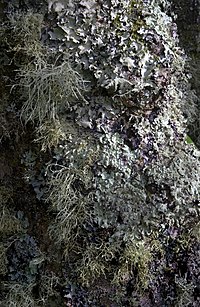
Photo from wikipedia
Differences in the elemental composition of plants, mainly C, N, and P, have been shown to be related to differences in their nutritional status, and their morphological and functional traits.… Click to show full abstract
Differences in the elemental composition of plants, mainly C, N, and P, have been shown to be related to differences in their nutritional status, and their morphological and functional traits. The relationship between morphological traits and micronutrients and trace elements, however, has been much less studied. Additionally, in bryophytes, research devoted to investigating these relationships is still very scarce. Here, we analysed 80 samples from 29 aquatic and semi-aquatic (hygrophytic) moss species living in Mediterranean springs to investigate the relationship between moss nutrient concentrations and their micro- and macroscopic morphological traits and growth forms. We found that, across species, the elemental concentration of mosses was more tightly linked to macroscopic traits than to microscopic traits. Growth forms could also be successfully explained by the concentration of elements in mosses. Apart from macronutrients and their stoichiometric ratios (C:N, C:P, and N:P), micronutrients and trace elements were also important variables predicting moss morphological traits and growth forms. Additionally, our results showed that microscopic traits were well related to macroscopic traits. Overall, our results clearly indicate that the elemental composition of mosses can be used to infer their morphological traits, and that elements other than macronutrients should be taken into account to achieve a good representation of their morphological and, potentially, functional traits when comparing the elemental composition across species.
Journal Title: Plants
Year Published: 2021
Link to full text (if available)
Share on Social Media: Sign Up to like & get
recommendations!